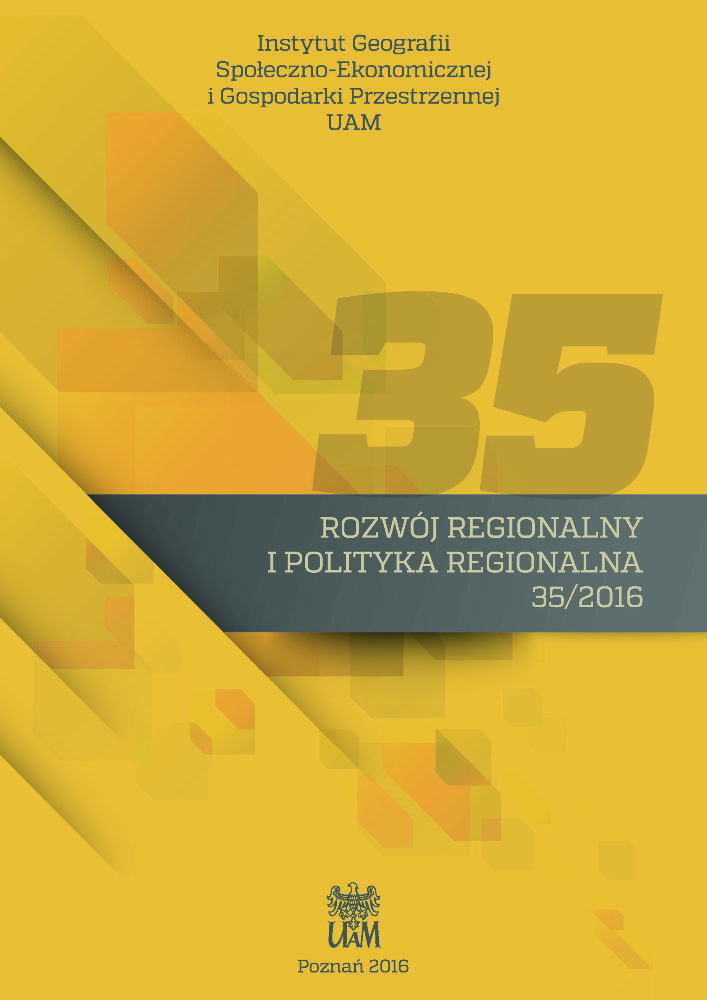Abstrakt
This paper proposes a critical review of Geodesign methods and techniques which can be used to carry out collaborative design in participatory processes. The case study of a Geodesign workshop held in 2016 Cagliari (Italy) shows how it is possible to involve teams of members of the community in what is perhaps the most critical phase of a spatial planning process that is putting knowledge into action through the collaborative design of future change alternatives, and their choice based on negotiation. In addition, a discussion of further potential of the Geodesign approach in public participation is discussed with reference to both knowledge creation and community value and preferences accounting.Bibliografia
Avin U. 2016. NCHRP 08-36/Task 117, Sketch Tools for Regional Sustainability Scenario Planning, 2016.
Arnstein S. 1969. A Ladder of Citizen Participation. Journal of American Institute of Planners, 35–4: 216–224. DOI: https://doi.org/10.1080/01944366908977225
Campagna M. 2014. The geographic turn in Social Media: opportunities for spatial planning and Geodesign. Computational Science and Its Applications – ICCSA 2014. Springer International Publishing, pp. 598–610. DOI: https://doi.org/10.1007/978-3-319-09129-7_43
Campagna M. 2016. Metaplanning: About designing the Geodesign process, Landscape and Urban Planning, Available online 6 July 2016, ISSN 0169-2046, http://dx.doi.org/10.1016/j.landurbplan.2015.08.019. DOI: https://doi.org/10.1016/j.landurbplan.2015.08.019
Campagna M. 2016b. Social Media Geographic Information: Why social is special when it goes spatial. In: Capineri C., Haklay M., Huang H., Antoniou V., Kettunen J., Ostermann F., Purves R. (eds) European Handbook of Crowdsourced Geographic Information, Pp. 45–54. London: Ubiquity Press. DOI: http://dx.doi.org/10.5334/bax.d. License: CC-BY 4.0. DOI: https://doi.org/10.5334/bax.d
Campagna M., Moura A.C.M., Borges J., Cocco C. 2016. Future Scenarios for the Pampulha Region: A Geodesign Workshop. Journal of Digital Landscape Architecture, 1-2016. Herbert Wichmann Verlag, Berlin/Offenbach, pp. 292–301.
Carver S. 2001. Participation and Geographical Information: a position paper. Position Paper for the ESF-NSF Workshop on Access to Geographic Information and Participatory Approaches Using Geographic Information, Spoleto, 6–8 December.
Davidoff P. 1965. Advocacy and pluralism in planning. Journal of the American Institute of Planners, 28: 331–338. DOI: https://doi.org/10.1080/01944366508978187
Ervin S. 2011. A system for GeoDesign. Proceedings of Digital Landscape Architecture. Anhalt University of Applied Science, pp. 145–154.
Innes J., Booher, D. 2010. Planning with Complexity: An Introduction to Collaborative Rationality for Public Policy. Routledge/Taylor and Francis, Oxford, 2010.
Harris B. 1989. Beyond Geographic Information Systems: computer and the planning professionals. Journal of American Planning Association. 55(1): 85–90. DOI: https://doi.org/10.1080/01944368908975408
Khakee A. 1998. Evaluation and Planning: two inseparable concepts. Town Planning Review, 69–4: 359–374. DOI: https://doi.org/10.3828/tpr.69.4.3803q86489619xm7
Kingston R. 1998. Web Based GIS for Public Decision Making in the UK. Paper for the Project Varenius Specialist Meeting on Empowerment, Marginalization and Public Participation GIS, Santa Barbara, CA, http://www.ncgia.ucsb.edu/varenius/ppgis/papers/index.html.
Nyerges T., Ballal H., Steinitz C., Canfield T., Roderick M., Ritzman J., Thanatemaneerat W. 2016. Geodesign dynamics for sustainable urban watershed development. Sustainable Cities and Society. Elsevier, 25: 13–24. DOI: https://doi.org/10.1016/j.scs.2016.04.016
Rivero R., Smith A., Ballal H., Steinitz C. 2015. Promoting Collaborative Geodesign in a Multidisciplinary and Multiscale Environment: Coastal Georgia 2050, USA [In:] E. Buhmann, S. Ervin, M. Pietsch (ed), Peer Reviewed Proceedings Of Digital Landscape Architecture 2015. Wichmann, Berlin/Offenbach, pp. 42–58.
Steinitz C. 2012. A Framework for Geodesign: Changing Geography by Design. Esri Press, Redlands, CA.
Licencja
Copyright
© 2016 IGSEiGP, Uniwersytet im. Adama Mickiewicza w Poznaniu
OPEN ACCESS
